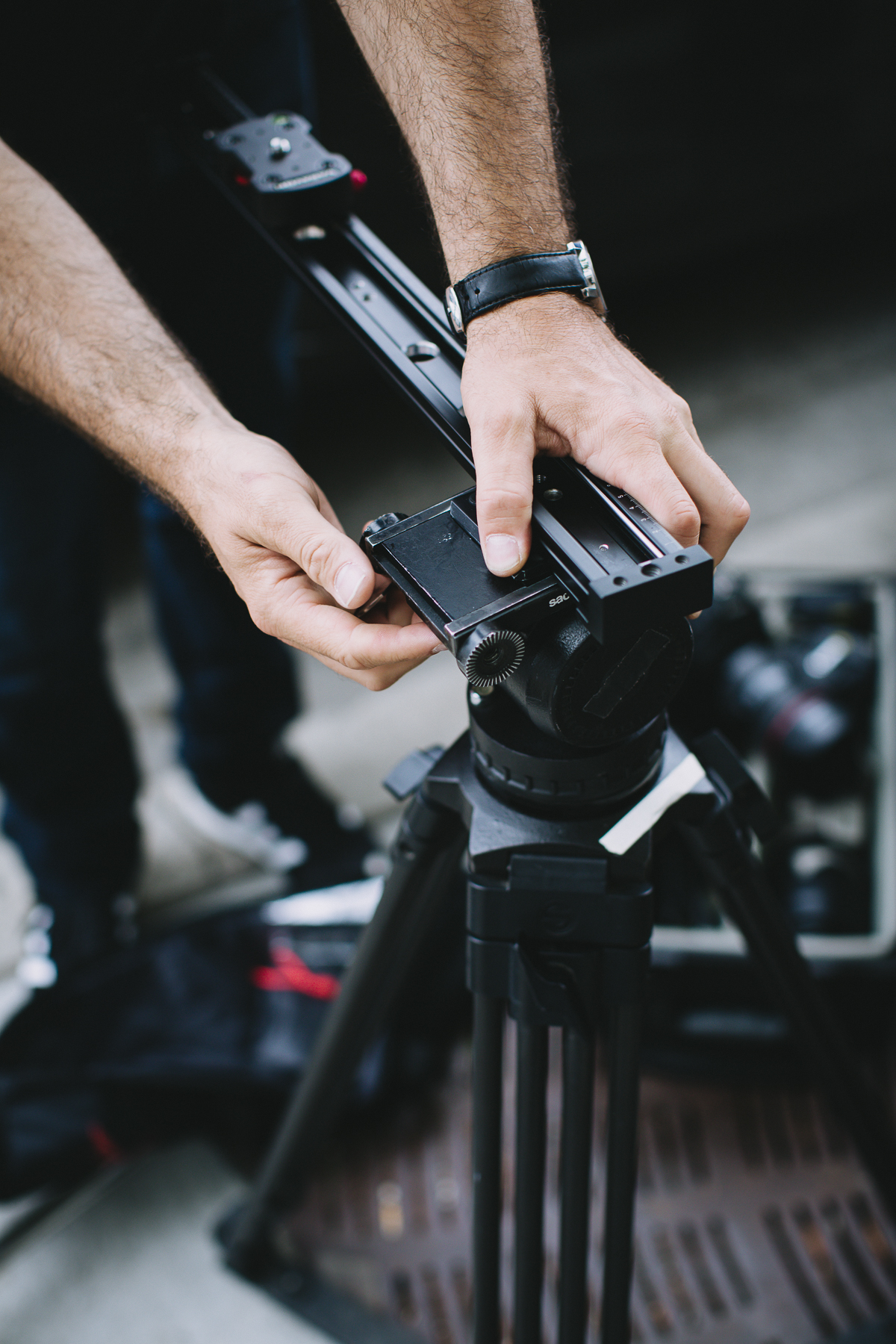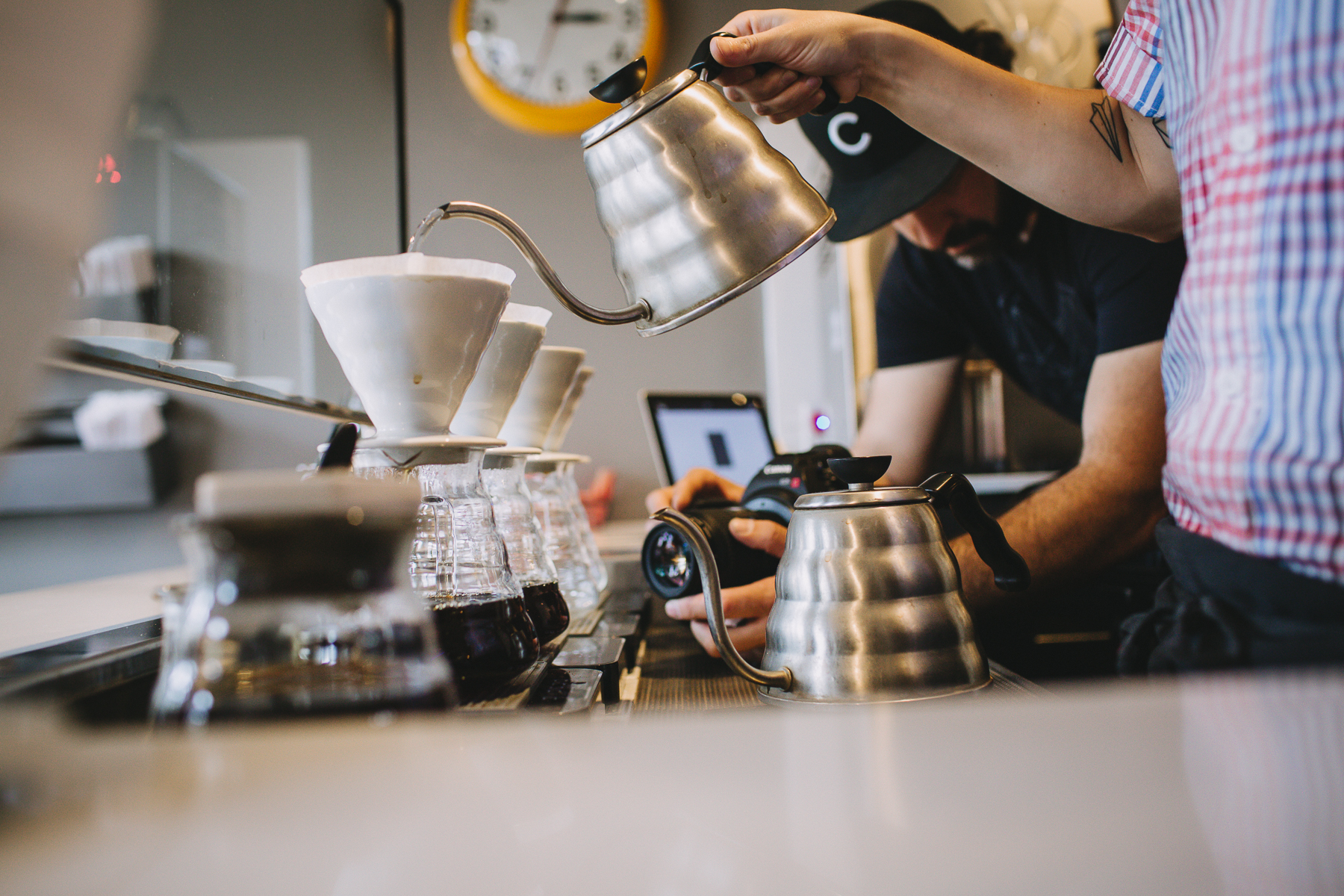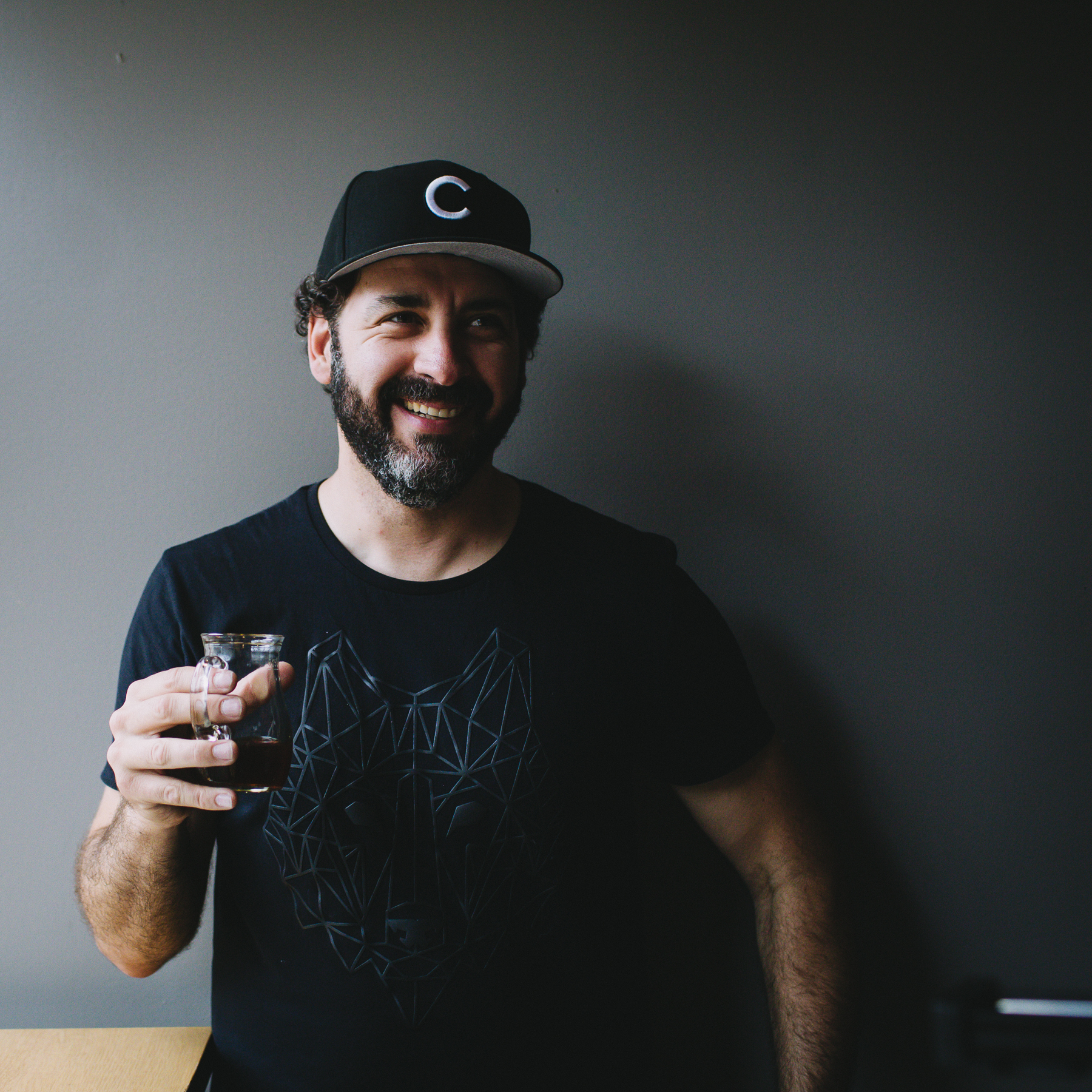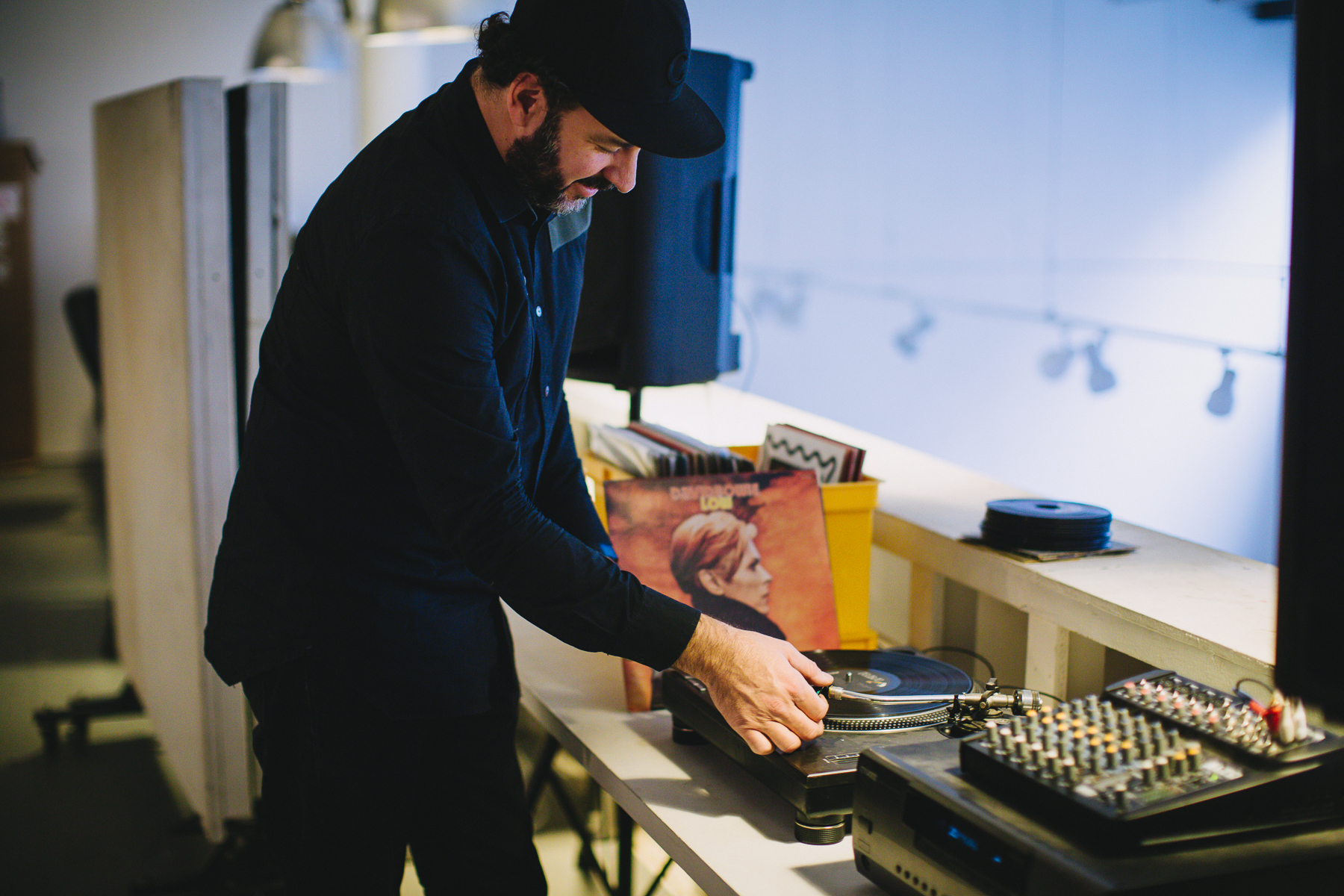—
“I’m not interested in being a one man band.
I welcome fellow technicians and collaborators. I’d like to continue to have great stories to tell.”
CHUCK PRZYBYL
–
In a few words, describe yourself and your practice.
I’m a filmmaker with my own small production company - MOST Visual. We do documentary and promotional videos. I have a background in art and photography and I love music.
MOST Visual came out of the documentary and video installation work that myself and my wife, Edyta Stepien were doing. The name has a funny story. Edyta and I were having a conversation about how I seem to always know where I’m going - I have a very strong sense of direction. But she always knows what time we will get there. I made the joke that each of us has a super power and together we are like the Masters of Space and Time. It instantly hit me that it was a great “band name”, but it also had an interesting double meaning for film and video production. I gave it the acronym MOST and it really resonated with me. We don’t usually use the acronym anymore but I love the idea it came from and the idea of giving something your all.
“It’s an amazing time to be making videos.Technologically all of the tools are available and can be put to good use. Now it’s not so much about “Can we do it?” but “Why should we do it?”
–
When did you start your practice?
I’ve had a long circuitous route to get where I am today. I started photography in my second year of college and then transferred to Columbia College, where I got into photo montage and Photoshop which led me to work on my own photo-based comic. This got me into storytelling and digital editing. I then moved into After Effects and video editing. My first big project was an (unfinished) documentary with director Rusty Nails called Highway Robbery. After years of editing and doing freelance photo I decided it was time to merge the two and bought a video camera. That was 12 years ago. I’ve since shot 2 features, about 50 shorts and literally hundreds of promotional videos.
–
How does where you live affect your work?
I’d like to think Chicago is a no-nonsense kind of town, but I’m originally from Calumet City and Hammond, Indiana - where we take even less nonsense. I like to think I bring my working class upbringing into my current work.
Chicago - the city - is wide open for a filmmaker. There is so much potential here - from excellent locations to the ability to shoot in the studio or with some of the country’s best actors - it’s an excellent place to live and work. I can go on…
WHAT MAKES YOUR WORK UNIQUE?
I get excited visualizing a subject and I obsess with framing images. I have experience in both photojournalism and photomontage which I heavily rely on. I can’t tell you how often what I am doing is based from my own past street photography. It’s all about the approach.
–
How do you start your process?
It always depends. I can be inspired by themes, structure, or history. I like to take a holistic artist’s approach. I immerse myself in the subject and find my inspiration from what excites me. I also really like to use music to give a vibe for a video. We produced 16 episodes of the show 12 for 12. Each month we went behind the scenes at some of the most interesting companies in Chicago and Atlanta and made a 12 minute profile about their brands. I would structure each episode’s feel with music. For example, Stern Pinball had to be classic rock and the Green Mill jazz, but for Goose Island we used indie rock and ska, for Intelligentsia we used bossa nova. It was a great thematic way to work and build something that had it’s own identity each month.
–
Is your practice how you support yourself?
Yes, and my side hustle is planning for the future and refining the work.
–
What are some challenges you're facing in your practice?
It’s an amazing time to be making videos. Technologically all of the tools are available and can be put to good use. Now it’s not so much about “Can we do it?” but “Why should we do it?” I constantly ask myself: are the techniques best servicing the story?
There is a feature documentary project I’m doing on the Grand Calumet River and Calumet Region. We planned to produce the film in a year and right now we’re 20 months into it and I feel that it is just getting warmed up. Big projects, with big ideas take a lot of time and energy to complete.
–
How would your audience describe you?
I’d like to think of myself as a visual storyteller. If that is too much, then I’d say someone who cares about what they are showing people.
“If you believe in what you do keep doing it. It’s easy to get frustrated - especially over time. But if you do good work with honesty and integrity people will notice.”
–
Who (or what) inspires you?
There is so much that inspires me, from music to the stories I read. I’m generally curious about things and when I find something that thrills me I’ll ride that wave of influence. As an example, my interest in the maker movement led to the short film Box of Sound about making cigar-box synthesizers. This eventually led to shooting inspirational musicians like Laurie Anderson, Gary Numan, Dan Deacon, Flying Lotus and others for Moogfest. In a sense these different ripples of inspiration have become huge waves in my life that I’m still riding.
–
What is the most useful tip or advice you’ve ever been given?
Recently - “Fortune favors the bold”. I feel like life is going back to analog, but I have a tendency to clam up in social situations. Sometimes it’s best to go out on a limb and make friends. I’m also trying to surround myself with positive vibes and people.
–
What would you be doing if you weren't doing this?
I wonder about that every so often. I used to say - renting kayaks and snorkel gear in Cuba. But more recently I’d say traveling Japan and doing a Robert Frank “The Americans”-style deep dive into this place of wonder.
ARE YOU COMFORTABLE SHARING ALL ASPECTS OF YOUR PROCESS?
My trade secrets are experience, honesty, and hard work — therefore I encourage everyone to copy me.
–
If you were to share one piece of advice with those who aspire to do what you do, what would it be?
If you love what you do it’s best to do it your way. There is a lot of lip service given to “Do what you love.” That’s great advice and all - but if you are paid to do what you enjoy - it’s possible to enjoy it less over time. It’s best to do what you love in a way that inspires you.
–
How has your practice changed over time? Where do you see it going?
I think it has expanded and I would like to see it continue to expand. I’m not interested in being a one man band. I welcome fellow technicians and collaborators. I’d like to continue to have great stories to tell from great clients. But I’d also like to further expand our pure documentary aspirations. The future for MOST Visual will include more self produced documentary series’s and 360 video projects for sure.
–
What are you currently working on?
Personally I’m directing a feature documentary on the Calumet Region - focusing on the Grand Calumet River - what was once considered the most polluted body of water in North America. Our working title is Area of Concern.
With MOST Visual we’re doing some great projects. We’re promoting and documenting the Chicago Architecture Biennial, pinball promotion with Stern Pinball, great projects with Luftwerk and Perrier-Jouët, a local reality show called The Ring Master. Things are good, but we’re always looking to make them the MOST.








































